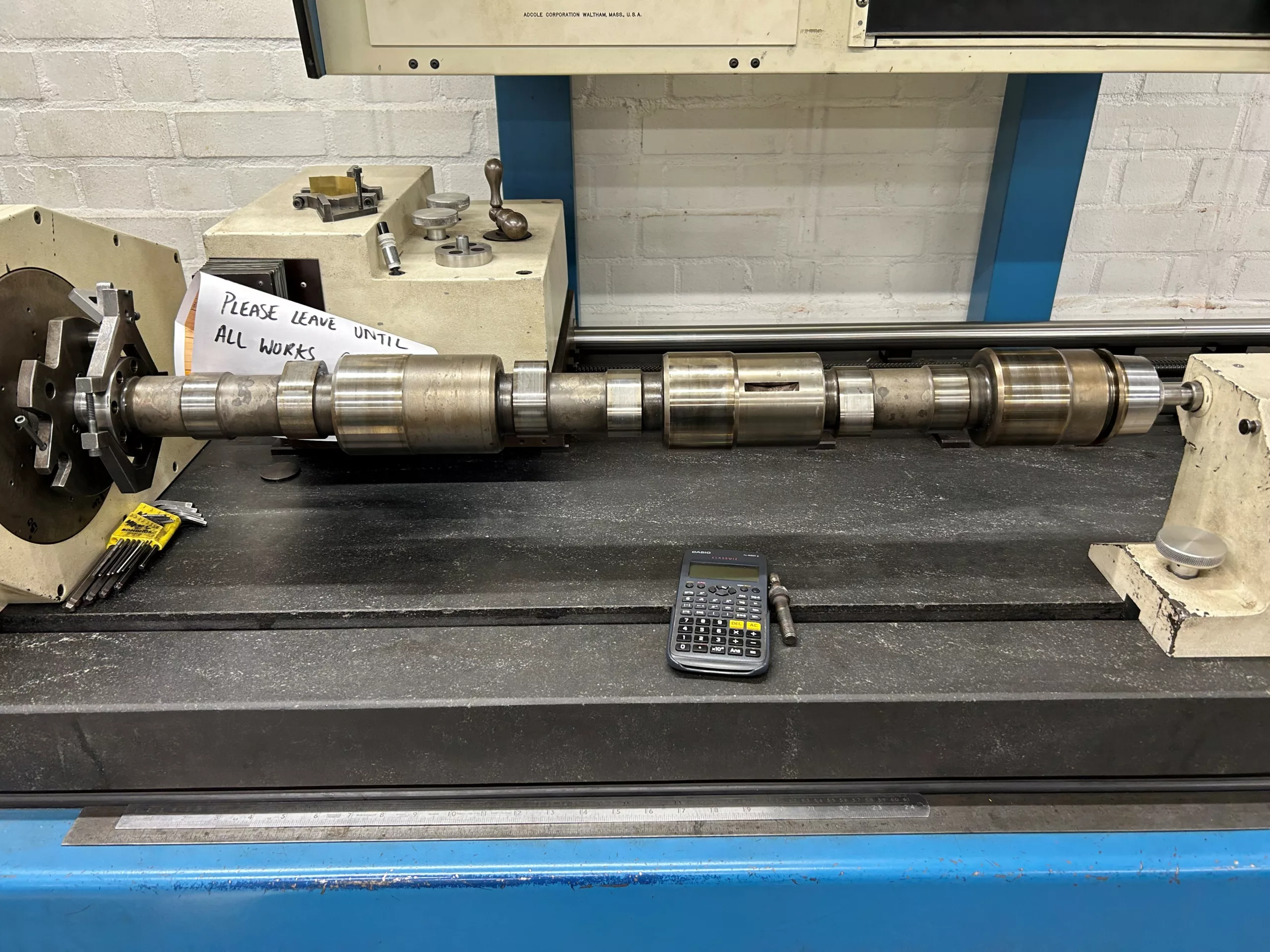
A camshaft is a crucial component in many mechanical systems, from automotive engines to industrial machinery. In this article, we will explore what a camshaft does, how it works, and why it is important across various industries, including packaging, pharmaceuticals, and power generation.
What is a camshaft?
A camshaft is a rotating shaft fitted with cams, which are specially shaped to dictate the movement of connected components. As the camshaft rotates the cams shape, position, rotation speed and interaction with other components control timing, movement, and force within a system.
In internal combustion engines, camshafts regulate the opening and closing of intake and exhaust valves, ensuring the correct air-fuel mixture enters the cylinders while exhaust gases exit at precisely the right moment. Accurate timing is essential for peak engine performance, optimal fuel usage, and emission regulation.
Beyond engines, camshafts are also used in high-precision machinery, such as bottling, canning, and pharmaceutical packaging systems. In these applications, camshafts help synchronise movements, control mechanical switches, and ensure consistent, automated processes.
Camshaft materials
Camshafts are manufactured from various materials depending on their intended application, durability requirements, and performance expectations. Here are the most common materials:
Steel
Used in high-performance applications due to its exceptional strength and resistance to wear and mechanical stress.
Cast and chilled cast iron
This is widely used in high-volume production due to its cost-effectiveness and excellent wear resistance.
Alloyed steels
Alloyed steels offer a balance of durability and wear resistance, making them suitable for a range of applications.
Billet steel
Allowing for precise control over camshaft profiles and providing exceptional durability, billet steel is often used in custom or high-performance applications.
Tool steel
Highly resistant to heat and extreme mechanical loads, tool steel is ideal for high-stress applications.
How does a camshaft work?
A camshaft operates by converting rotational motion into linear movement, ensuring precise timing of mechanical actions. Because an engine camshaft is one of the most commonly referred to, we have detailed here some of the main functions of an engine camshaft:
Valve timing control – The camshaft’s lobes push against lifters or rocker arms, opening and closing the engine’s intake and exhaust valves at the correct intervals. This allows fresh air-fuel mixture to enter and burnt gases to exit.
Connection to the crankshaft – A camshaft is synchronised with the crankshaft via a timing belt, chain, or gear system. The crankshaft converts combustion energy into rotational force, while the camshaft ensures valve operation aligns with piston movement.
Lobe profiles and timing – The shape and size of camshaft lobes determine how far and how long a valve remains open, directly affecting engine performance, fuel efficiency, and emissions.
In industrial machinery, camshafts work similarly, controlling mechanical components such as conveyor belts, filling stations, and automated cutters to maintain precise, repeatable operations.
Importance of camshaft timing
Accurate camshaft timing is essential for optimal performance in both engines and industrial machinery. Performance and efficiency in engines can be affected greatly by camshaft timing: incorrect timing can lead to power loss, increased fuel consumption, and higher emissions. In manufacturing, it can result in inconsistent product handling or production delays which can affect costs.
Many modern engines use variable valve timing (VVT) to adjust camshaft timing dynamically, optimising performance and efficiency at different speeds and loads. In industrial applications, precise camshaft timing ensures the smooth operation of automated processes, reducing wear and preventing mechanical failures.
Signs of a worn or faulty camshaft
A failing camshaft can cause significant performance issues. Thankfully, it is easy to spot most of the signs of a worn or faulty camshaft. Some common signs include aural symptoms such as ticking, tapping noises or engine misfires. Visible signs include engine lights or damage such as cracks or excessive wear on the lobes.
There are several causes of camshaft wear that you should look out for, such as poor lubrication which can be caused by low oil levels or even contaminated oil. Manufacturing defects such as spring coils binding can cause the cam lobes to wear quicker, or excessive engine loads triggered by overloading or too much usage in industrial machinery.
A worn or faulty camshaft can significantly impact efficiency, whether in an engine or an industrial setting. Proper maintenance and high-quality materials are essential to ensuring longevity and reliability.
Your trusted performance camshaft manufacturers
Camshafts play a critical role in engines and industrial machinery, controlling timing and synchronisation to ensure efficient operation. Whether used in high-performance vehicles, large-scale manufacturing, or power generation, the quality and precision of a camshaft directly impact reliability and efficiency.
Polgain is a UK camshaft manufacturer specialising in custom camshafts for both automotive and industrial applications. As a recent example, a customer was servicing a large power generation diesel engine and found that the cam lobes had become worn and damaged in operation. After shipping the four damaged camshafts to Polgain Ltd, we were able to measure unworn areas of the cam lobes to acquire the profiles using our Adcole cam contour measuring machines and prepare drawings for the cam angles. Regrinding all four camshafts saved the customer the price of purchasing four completely new items!
Whether you require cam grinding, regrinding, or a tailored camshaft solution for performance enhancements or large-scale production, we can help ensure your camshaft meets the highest standards of precision and durability.










